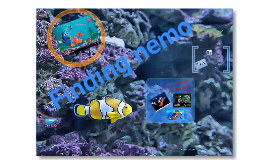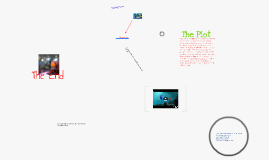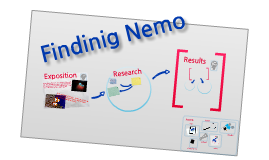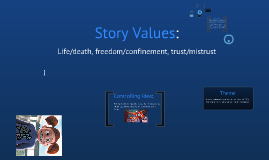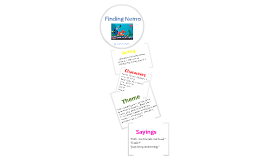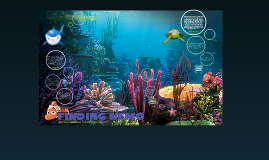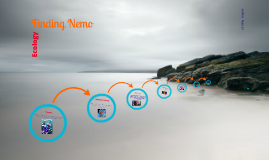Finding Nemo
Transcript: Finding Nemo Ecology Barracuda is Secondary Consumer Andrew Nguyen Ecological Relationships When trying to help Nemo escape from the fish tank in the dentists office to reunite with his father, Gill was put on the verge of death (severely decreasing his fitness), but this increased Nemo's fitness to be able to reproduce in the future after his escape. This is altruism. Marlin being over protective of Nemo would be a parental care behavior because, as being the only parent, it is necessary to ensure the survival of their offspring until they are reproduce. A type of behavior that coexists when adapting to an environment. The relationship between Nemo and Jacques, the cleaner shrimp, in the fish tank was a mutualistic interaction because both species benefited the interaction. Nemo was benefited from being cleaned and Jacques benefited from the food he received from cleaning Nemo. Marine Biome An ecologic relationship between two different species that live together with positive, neutral, or negative effects to one or both species. Symbiosis The sum of how species in the environment interact with biotic and abiotic factors. The interactions between organisms that cause an effect on the structure of the community. A classification category of the world's ecosystems by its vegetation, wildlife, and unique features. Reunited Fallacies Finding Nemo Food Cahin Biomes: 3 Fallacies A factor that is sometimes misleading, but does not actually exist in the real environment. Altriusm and Parental care The amount of pressure at the depth of the Deep Sea Angler's environment would have cause Nemo and Dory to suffocate, yet the environment seemed to have no impact on their survival. The Sea Turtles in the film were caring for their young, but in reality, the mother Sea Turtle travels to a sand bank to lay her eggs and will never return. Marlin and Dory were blown out of that whale's blowhole. The amount of pressure required to blow that amount of water out of a small hole would be enough to crush Marlin and Dory in the process. Finding Nemo, located in the Great Barrier Reef, this biome contains organisms ranging from primary producers (seaweed) to tertiary consumers (barracuda). The general area of the reef has an average temperature of 83^F that is year-round. These organisms, for example; crab, shrimp, clam, oyster, starfish, sponge, sea anemone, octopus, eel, worm, snail, and coral have all adapted to this type of warm, bright, and diverse environment. Having a colorful phenotype is one example that these organisms have adapted to. The consistent flow of energy from one trophic level to another; Primary producer, Primary consumer, Secondary consumer, Tertiary consumer, and Quaternary consumers. Primary producers: Seaweed and Algae Primary Consumers: Coral, Seahorses, Sea turtles, Clown Fish Secondary Consumers: Barracuda Tertiary Consumer: Angler Fish Quaternary Consumer: Shark As the energy travels up each trophic level, the amount of energy the organisms consumes by 20-25%. The shark's use of a biotic factor in their environment is by eating other organisms, mainly small primary and secondary consumers, to get energy and survive another day to reproduce. Like in the film, one of the three sharks had eaten he "fish-buddy". Competition is competing against another organism to get food. In Finding Nemo, competition is slightly different, but has a similar meaning. Dory and Marlin raced through the jellyfish to see who could get passed the swarm first. This would still be competition, just not for resources, but for the fitness of Marlin's son. Ecological Niches and Competition Community Ecology Energy Flow Adaptive Behaviors Mutualism Interspecific Interactions and Keystone Species One example of an Interspecific Interaction is "Predation". The scene where a barracuda eats Nemo's mother is an example of predation in the film. Nemo's home, the Sea Anemone can contribute a keystone species, as they are essential to clownish safety. Since clown fish have adapted towards living in a Sea Anemone, it would be difficult and crucial to their survival if they did not live in a Sea Anemone. Finding Nemo Food Chain






